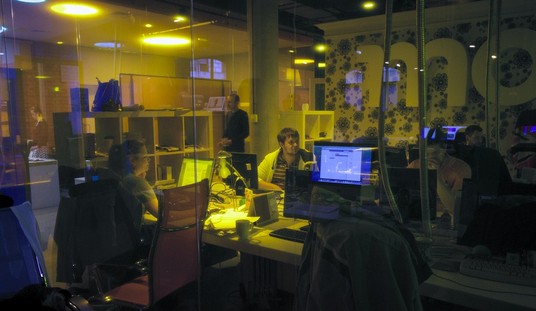In an interview with IGN, director Zack Snyder cheerfully affirms the description of his recently released Man of Steel as “a full-on science fiction film.” Indeed, the comic book movie may prove to be the year’s best science fiction film despite other high-profile efforts which land more overtly within that genre.
Good science fiction uses fantastic but plausible alternative realities to posit profound philosophical questions. What does it mean to be human? Are we alone in the universe? Is there a god and, if so, what’s he like? Bad science fiction telescopes its agenda, attempting to answer its own questions with unearned authority in an attempt to proselytize.
M. Night Shyamalan has offered examples of both. His alien invasion tale Signs, offered from the perspective of a family struggling with faith as they mourn the passing of a mother, artfully asks whether providence exists. A later effort, The Happening, attempts unsuccessfully to make horror monsters out of plants and preaches with such sanctimony that it might as well be a promotional video for the Sierra Club.
There were echoes of The Happening in this year’s science fiction release from Shyamalan starring Will Smith and son Jaden. Essentially a shipwreck story, After Earth takes place in a future where everything on Earth has evolved to kill humans. Because, you know, we’re so destructive that the planet had to immunize itself against us.
The other big science fiction release this year was the Tom Cruise vehicle Oblivion, which was apparently so bad that it prompted NPR to call it “the most incoherent piece of storytelling since John Travolta’s Battlefield Earth.” That was until people saw After Earth, which also warranted comparisons to the infamous Scientology-inspired commercial bomb.
https://www.youtube.com/watch?v=Xl4x2-PNc9I
Later this year, we will entertain a new entry from District 9 director Neill Blomkamp. Elysium has the look of an Occupy Wall Street riot set in the not-too-distant future. The privileged live in comfort. The masses live in squalor. Only one man – leftist bloviator Matt Damon – can bring hope and change.
Yawn.
By contrast, Man of Steel boasts an agenda that’s more narrative than political. What would Superman look like in the real world? Why would he wear that costume? How would people react to his power? Is a person’s humanity defined by their physical nature or how they are nurtured? The film posits these questions, then answers only to the extent necessary to ensure narrative sense while allowing the audience to draw additional conclusions.
Man of Steel tells of alien invasion from the perspective of the invaders. While a typical film in the genre cloaks its aliens in mystery until a dramatic reveal, Man of Steel lets us know who they are from the outset. We know their psychology, their motivation, and the stakes underlying their conflict.
Previous iterations of Superman have glossed over his alien origin as a throwaway explanation for his incredible powers. Man of Steel centers around his Kryptonian heritage and recognizes it as a defining aspect of Superman’s identity. The trailers for the film show one of the most effective innovations in that regard. The “S” shield stretched across Superman’s chest actually means something in Kryptonian. It is a symbol for hope. That makes a lot more sense than previous iterations which mostly took the symbol for granted.
Without explicitly trying, Man of Steel may prove to be the best science fiction film of the year. It leverages Superman’s alien origin to craft a higher concept than saving damsels because he can. It provides adequate reason for its characters to act as they do, and sets up themes which an inevitable sequel will be positioned to develop further. The alien invaders offer plenty of fodder for the yet-to-be-introduced Lex Luthor to chew on.









Join the conversation as a VIP Member